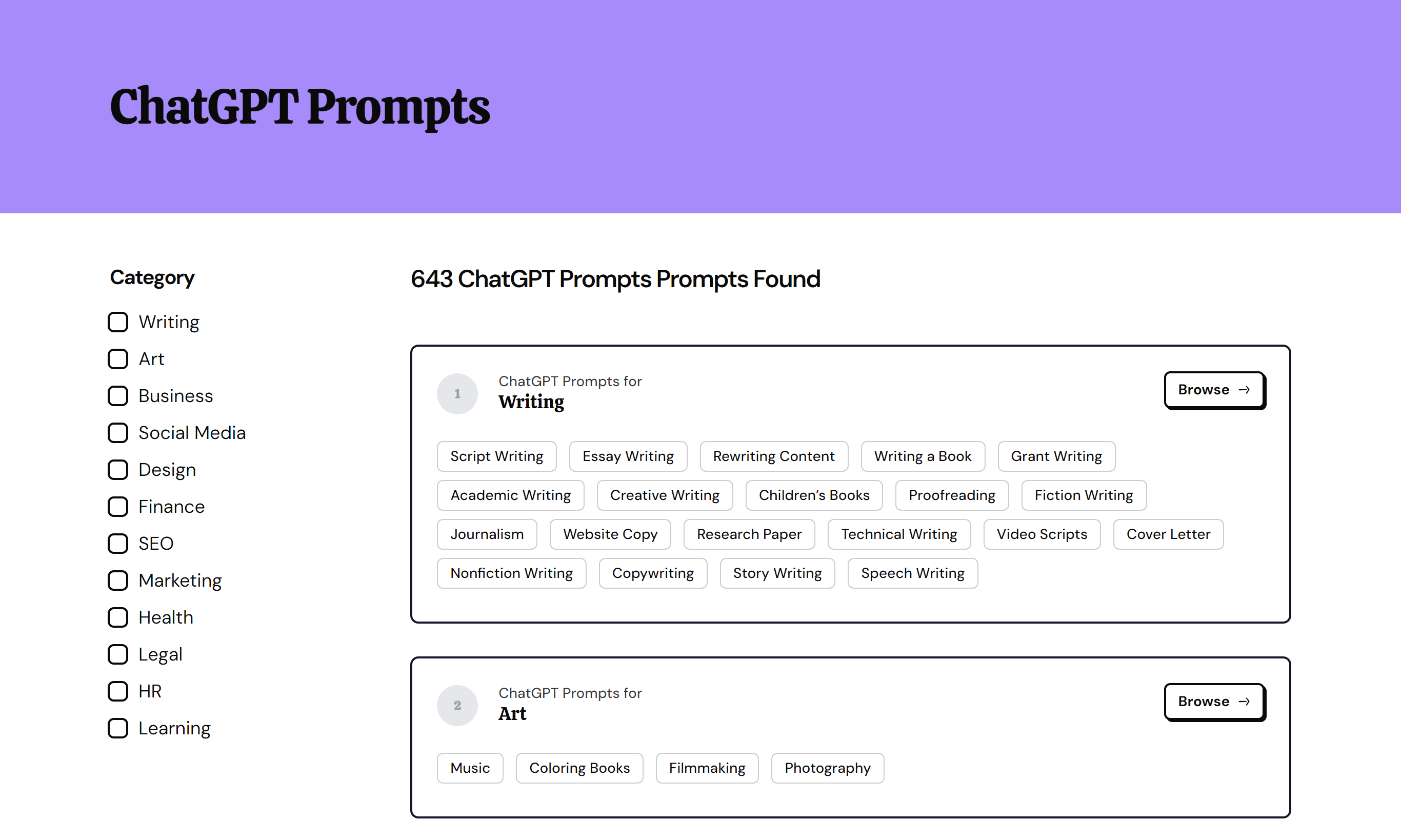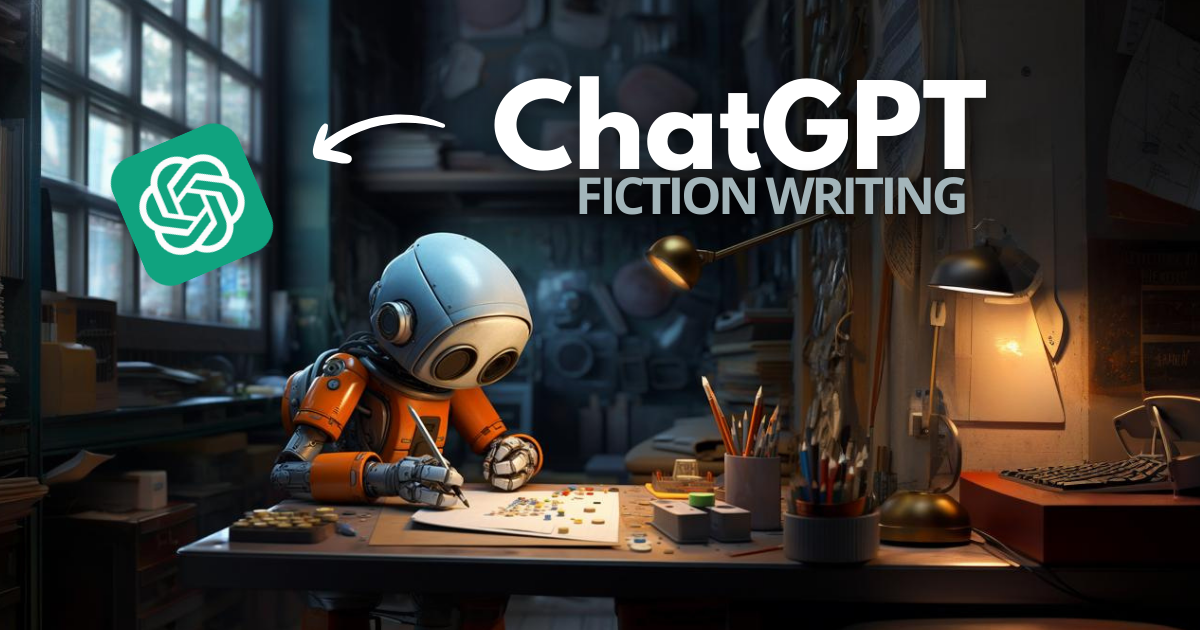Wouldn’t it be amazing if there was a tool that could help jumpstart your writing creativity?
Well, you’re in luck! In this post, I’m going to introduce you to a series of ChatGPT prompts designed specifically for fiction writers. These prompts will help spark your imagination, develop compelling characters, and create intriguing plots. If you're ready to take your fiction writing to a whole new level, let’s dive in!
These are the best ChatGPT prompts for fiction writing:
- Brainstorm plot ideas
- Create engaging storyline
- Build memorable characters
- Develop scenes
- Write dialogues
- Edit and proofread
- Overcome writer's block
In the next section, we'll take a closer look at each aspect of fiction writing (along with the prompt examples). And if you read till the end, you'll also find a tip to use these prompts more effectively.
ChatGPT Prompts for Fiction Writing
Let's dive into ChatGPT prompts. These prompts will inspire you to craft compelling characters, intriguing plots, and mesmerizing narratives.
1. To Brainstorm Plot Ideas
Plot ideas are the backbone of any good story. But sometimes, coming up with an original plot can be a challenge. This is where the first prompt comes in.
Using it, you'll be able to generate a plethora of unique and captivating plot ideas in no time.
As a seasoned fiction writer, brainstorm unique and original plot ideas for a fiction novel based on the specified [theme]. The ideas should be engaging, rich in detail, and have the potential to captivate readers. The plot should have a clear beginning, middle, and end, with interesting twists and turns. Consider the target audience's preferences, current trends in fiction, and how the theme can be explored in novel and exciting ways. The ultimate goal is to create a story that is deeply engaging and leaves a lasting impression on the reader.This prompt was generated by our ChatGPT prompt generator.
2. To Create Engaging Storyline
When creating a storyline, the challenge is to keep the readers hooked from beginning to end. The next prompt is designed to guide you through this process.
As a seasoned fiction writer, you are required to create an engaging and captivating storyline for a fiction novel revolving around the given [theme]. Your task includes crafting a well-structured plot, developing intriguing characters, and setting a compelling backdrop. The storyline should be original, vivid, and should effectively convey the underlying emotions and messages related to the theme. The narrative arc should be compelling, containing elements of conflict, climax, and resolution to keep the readers hooked from start to end.This prompt was generated by our ChatGPT prompt generator.
3. To Build Memorable Characters
Compelling characters are at the heart of every great fiction story. These characters need to be relatable, unique, and memorable. And with the help of the prompt below, you'll be able to breathe life into your characters like never before.
As a seasoned fiction writer, your task is to create a comprehensive and compelling character profile for a [character description] in a novel about [theme]. This includes outlining their physical description, personality traits, background story, ambitions, fears, and relationships with other characters. The character should be well-rounded, believable, and fitting to the theme of the novel. You should also include how the character evolves throughout the story. Emphasize the character's unique qualities and potential conflicts that would make the story more intriguing and engaging for the readers.This prompt was generated by our ChatGPT prompt generator.
4. To Develop Scenes
You can use the next prompt to improve your scene development process. It will help you to create vivid, engaging scenes that connect with your readers.
As a seasoned fiction writer, your task is to write an engaging and vivid scene set in [scene description]. Use descriptive language to immerse the reader in the setting, and ensure the characters and their actions are driving the plot forward. The scene should have a clear beginning, middle, and end, and should also fit within the overall narrative arc of the story. Include dialogue that reveals character and motivates plot, and use literary elements and techniques, such as metaphors, symbolism, and foreshadowing where appropriate. Make sure your scene is compelling, pushes the story forward and adds depth to the characters and the overall plot.This prompt was generated by our ChatGPT prompt generator.
5. To Write Dialogues
Dialogue brings your characters to life and drives your story forward. And with the help of the prompt below, you can make your dialogues more engaging and realistic.
As a seasoned fiction writer, your task is to write a compelling dialogue between the given [characters] set within the [scene]. The dialogue should be rich in character development, effectively convey the emotions and motivations of the characters, and drive the plot forward. The setting should be vividly described to immerse the reader in the scene. The dialogue should be realistic and engaging, reflecting the character's unique voice and personality. Remember to maintain consistency with the characters' backstories and the overall storyline. Ensure the dialogue is engaging and drives the plot forward.This prompt was generated by our ChatGPT prompt generator.
6. To Edit & Proofread
Most writers like to use ChatGPT to do their editing and proofreading. And that's what the next prompt is designed to help with. By using it, you'll ensure your story is polished and free of errors.
As a seasoned fiction writer, your task is to proofread my fiction novel. This involves a thorough check for spelling, grammar, and punctuation errors. Not only that, but you will also need to assess the overall structure, plot development, and character arcs. Offer constructive feedback and suggestions for improvement, while preserving the novel's unique voice and style. Ensure the story flows smoothly, the dialogues are engaging, and the narrative is compelling. Your main goal is to enhance the readability and quality of the novel while maintaining the author's original intent.This prompt was generated by our ChatGPT prompt generator.
7. To Overcome Writer's Block
The last prompt I'm going to show is for dealing with writer's block. As we know, writer's block can be a real obstacle for any fiction writer. But thanks to this prompt, you can now break through this barrier.
As a seasoned fiction writer, I need you to provide suggestions on how to continue my fiction novel. Read the current chapters and understand the storyline, character development, plot and the overall writing style. Based on this understanding, provide creative and engaging ideas on how to further develop the plot, flesh out characters, and enhance the narrative. Ensure your suggestions align with the established tone and genre of the novel. Provide a detailed outline for the next few chapters, including key events, character interactions, and potential cliffhangers.This prompt was generated by our ChatGPT prompt generator.
How to Use These Prompts Effectively
The prompts I mentioned today are also available in our FREE prompt directory. You can check them out here: ChatGPT prompts.

How To Generate Custom Prompts
Didn't find the prompt you need? Try our FREE ChatGPT Prompt Generator to generate one for you!

Final Thoughts
The creative process can sometimes feel overwhelming, but with the ChatGPT prompts I shared in this post, you have a new set of tools to battle it.
These prompts are designed to stimulate your creativity, help you flesh out your characters, plot, and setting, and ultimately, create captivating narratives that will make your readers fall in love with your writing.
FAQ
Let's also address some of the common questions about using ChatGPT for fiction writing.
Can I use ChatGPT to write a novel?
Yes, you can use ChatGPT to write a novel. It can help you generate ideas, develop plotlines, and even create unique character dialogues. However, it's important to remember that the ultimate storytelling ability lies within you as the author.
What prompts to use for ChatGPT to write a book?
When using ChatGPT to write a book, the prompts you use should be specific and related to your intended story. You can start with a broad prompt like "Write a fantasy novel about a magician" and gradually narrow it down with more specific prompts like "Describe the magician's appearance".
How do authors use ChatGPT?
Most authors use ChatGPT as a tool to spark creativity and generate ideas. They use it to assist in creating character dialogues, plot lines, setting descriptions, and much more.

